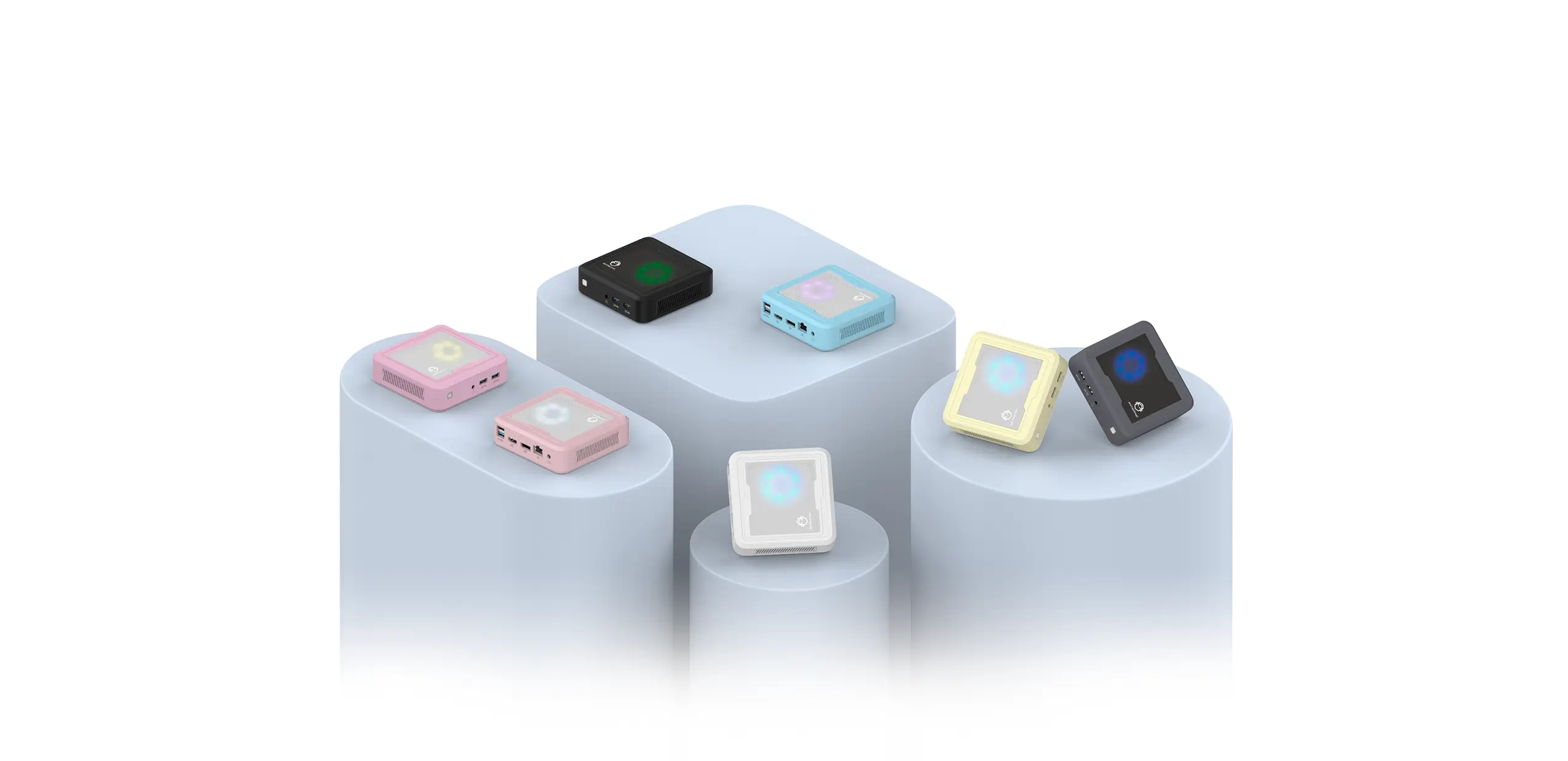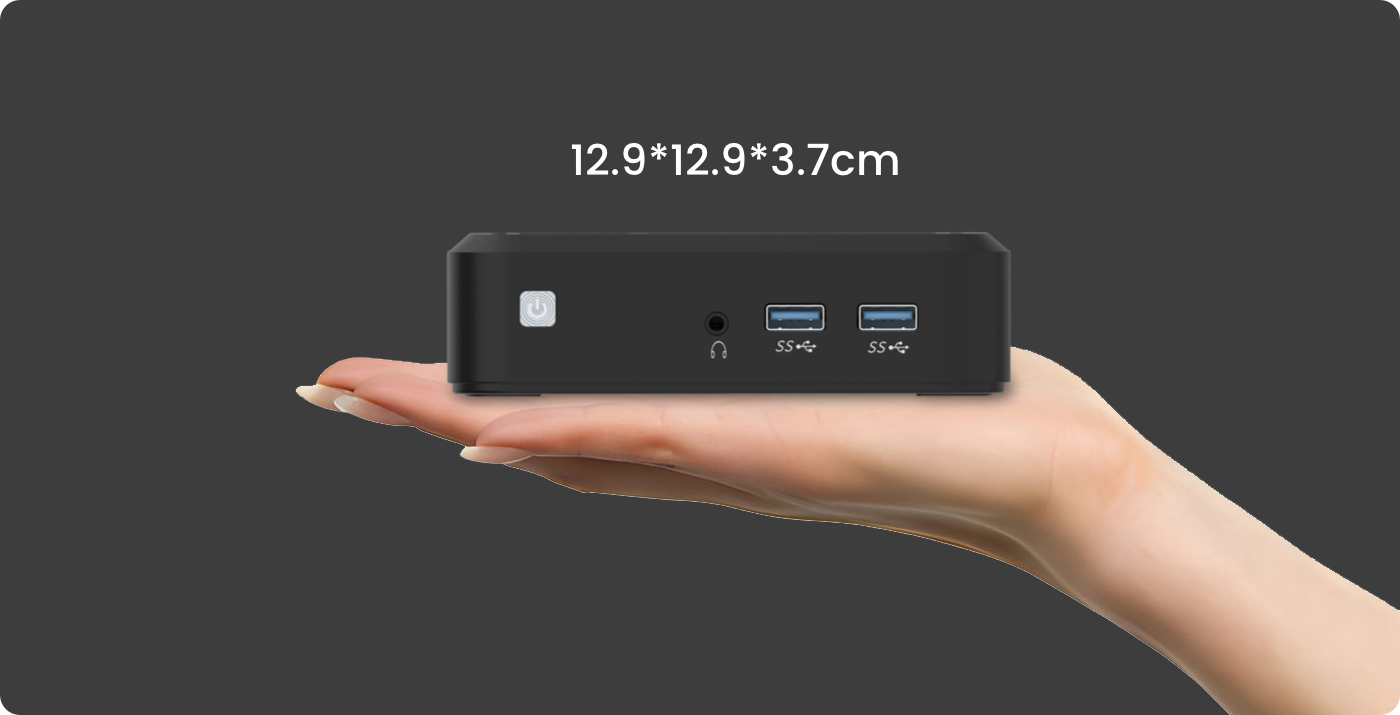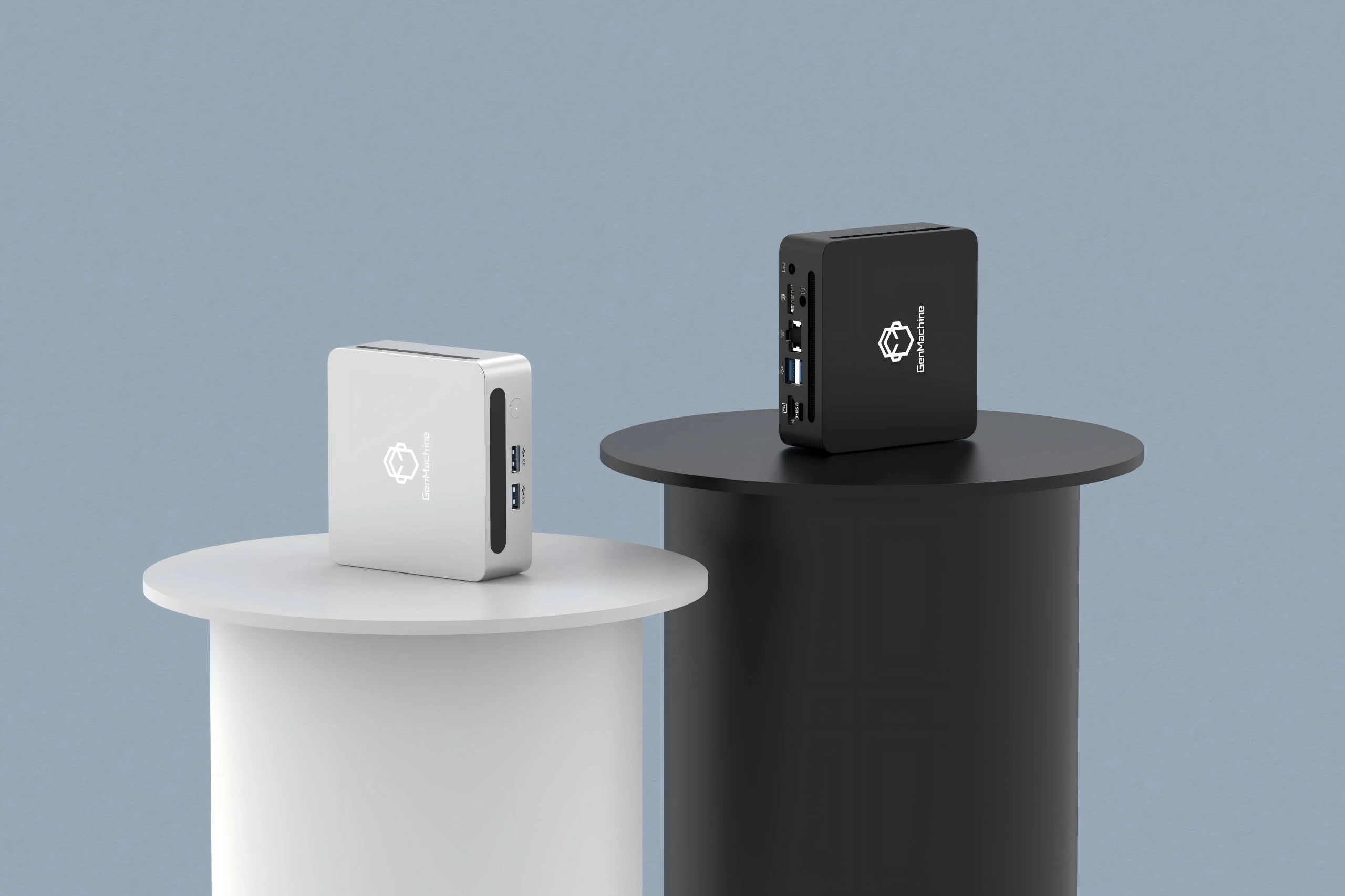In September 2025, ASRock unveiled the H810TM‑ITX Thin Mini‑ITX motherboard, featuring support for Intel Core Ultra Series 2 processors, DDR5 memory, and multiple display outputs. This launch highlights the growing power of compact PCs, showing that small form factors no longer mean limited performance. With advanced AI acceleration and the ability to drive multiple screens, these mini PCs are ready to handle tasks once reserved for bulky desktops.
For gamers and families alike, this signals a new era: your mini PC can become the centerpiece of a living room entertainment system. From multiplayer gaming to streaming movies, these tiny machines now deliver big experiences. In this guide, we’ll explore how to turn a mini PC into a home gaming hub for everyone.

Why Choose a Mini PC for Your Living Room Entertainment?
Unlike those bulky desktop computers, a miniature computer fits right behind your TV or sits quietly on a shelf—taking up barely any space, but still giving you a full-on gaming and multimedia experience. Its small size doesn’t mean it skimps on performance, either. Powerful mini PC with modern processors can keep up with, or even outdo, a small desktop. That makes them perfect for living rooms where space is tight, but you still don’t want to compromise on how well your device works.
Mini PCs also hold their own against popular consoles like the Nintendo Switch, PlayStation 5, or Xbox Series X. They can run high-res, high-frame-rate games that the Switch has trouble handling, and they let you play way more PC-only titles. Consoles might be cheap to buy upfront, but their games often add up to big costs over time. With a mini PC, you can get affordable or even free games through platforms like Steam and Game Pass—so families can build a bigger game library without spending too much. And it’s not just for gaming: mini PCs can stream 4K movies, run media servers, and handle multiple users at once, making them flexible hubs for all sorts of entertainment.
In short, a mini desktop bridges the gap between desktops and consoles, combining compact size, strong performance, and multifunctionality in a single, unobtrusive device.
Choosing a Mini PC: Key Parts to Prioritize
If you want a living-room mini PC that works well, focus on the key parts that matter for gaming and media:
- CPU: Go for a modern 6–8 thread processor. It needs single-thread speed for games, plus enough cores to stream or manage media at the same time.
- RAM: 16 GB works for gaming and media. Pick 32 GB only if you’ll run multiple apps or VMs together.
- Storage: Use an NVMe SSD for your OS and favorite games—1 TB is a good middle ground. Add a secondary drive for movies and big files.
- GPU: Integrated graphics handle indie or old games. For new AAA titles, get a discrete GPU.
- I/O & Displays: HDMI 2.1 or DisplayPort for 4K/120 Hz. Multiple USB ports let you plug in more peripherals.
- Networking: Wired Ethernet is best for stable multiplayer. Wi-Fi 6/6E works if you need flexible placement—low latency is a must.
- Cooling & Sound: Small cases don’t let air flow easily, so pick one with vents, quiet fans, or heat-pipe cooling.
Balance these, and your mini PC will feel smooth—ready for long gaming sessions or family movie nights. If you need mini PC recommendations, check out Top 5 Mini PCs for Mid-level Gamers.

Building a Home Multiplayer Hub: Practical Steps
Turning your tiny PC into a living-room hub requires a few smart setup choices:
- Define goals — Decide your target resolution and frame rate; this informs GPU and display selection.
- Placement and connection — Hide the mini PC behind the TV or place it on a shelf. Use wired Ethernet for low latency, or Wi-Fi 6/6E if cabling isn’t practical.
- Controllers and displays — Connect via HDMI/DisplayPort, pair controllers, and test input lag. Pre-assign profiles for quick multiplayer sessions.
- Storage and media organization — Install an NVMe SSD for the OS and frequently played games; add extra drives for movies or recordings.
- Software setup — Use a controller-friendly frontend, enable family sharing, and install streaming or remote-play apps.
- Network optimization — Prioritize gaming traffic with router QoS and use wired connections whenever possible.
- Performance tuning — Adjust power profiles, limit background tasks, and set frame-rate caps to maintain smooth performance.
- Convenience — Add a compact keyboard or remote, create user accounts, and map quick-launch buttons for favorites.
These steps turn a mini PC from a tinkerer’s desktop into a polished, living-room-ready system.
Real-World Setups & Inspiration
A mini PC can turn your living room into a go-to spot for all kinds of fun—here’s how:
- Couch Co-op Adventures: Grab friends or family, pass around wireless controllers, and jump straight into racing or co-op action games.
- Movie & Game Nights: Sink into the couch to stream 4K movies, then switch to gaming in seconds—no need to fumble with separate consoles or boxes.
- Retro & Indie Corner: Hook up retro-style controllers, fire up emulators for old classics, or play cozy indie games when you want something casual or nostalgic.
- LAN & Local Tournaments: Host small competitions with friends, record matches easily, and manage local multiplayer without hassle.
- Party Hub: Use it for karaoke nights, party games, or even collaborative apps—switch between family members’ profiles quickly, so no one waits long.
These setups prove a mini PC isn’t just for gaming. It’s a flexible entertainment hub that fits whatever mood or activity you’re into, whether it’s a quiet night in or a busy party.
Conclusion
A mini PC fits neatly into your living room without taking up much space, yet it’s powerful enough to run modern games and handle movies, streaming, and other media tasks. Unlike consoles, it offers access to a wider range of games and apps, often at lower long-term costs, and components can be upgraded over time.
With the right setup, a mini PC can host multiplayer sessions, movie nights, or retro gaming marathons, serving as a flexible hub for family and friends. Compact, capable, and adaptable, it turns your living room into a full-featured entertainment center everyone can enjoy.





